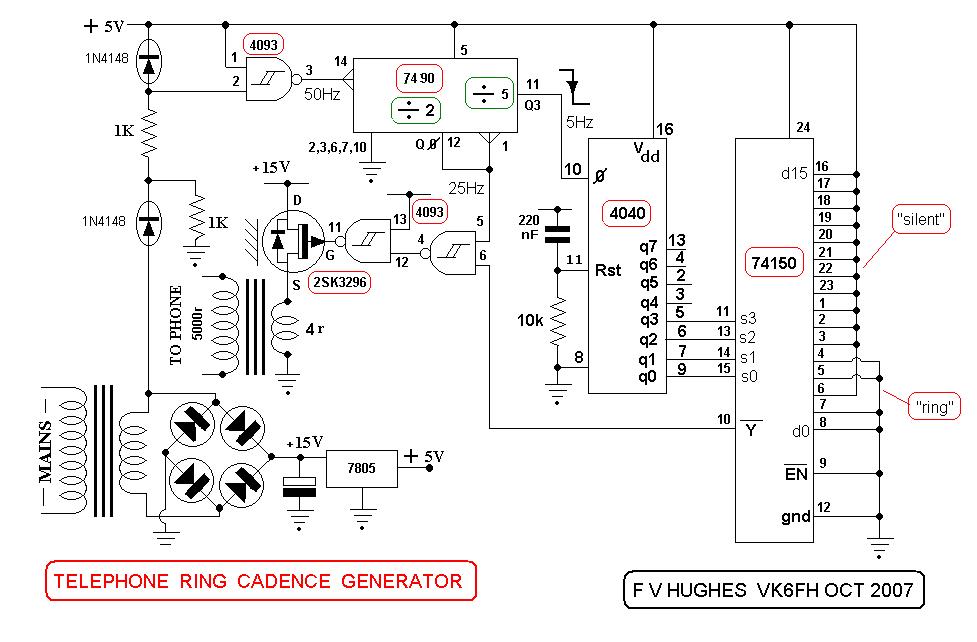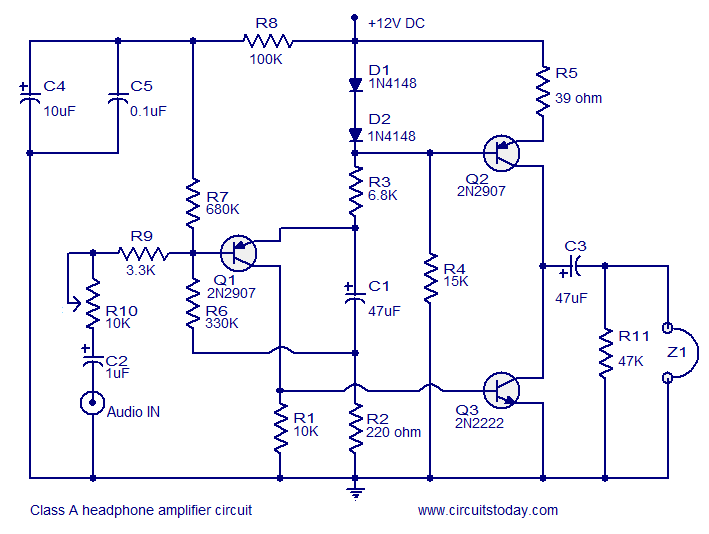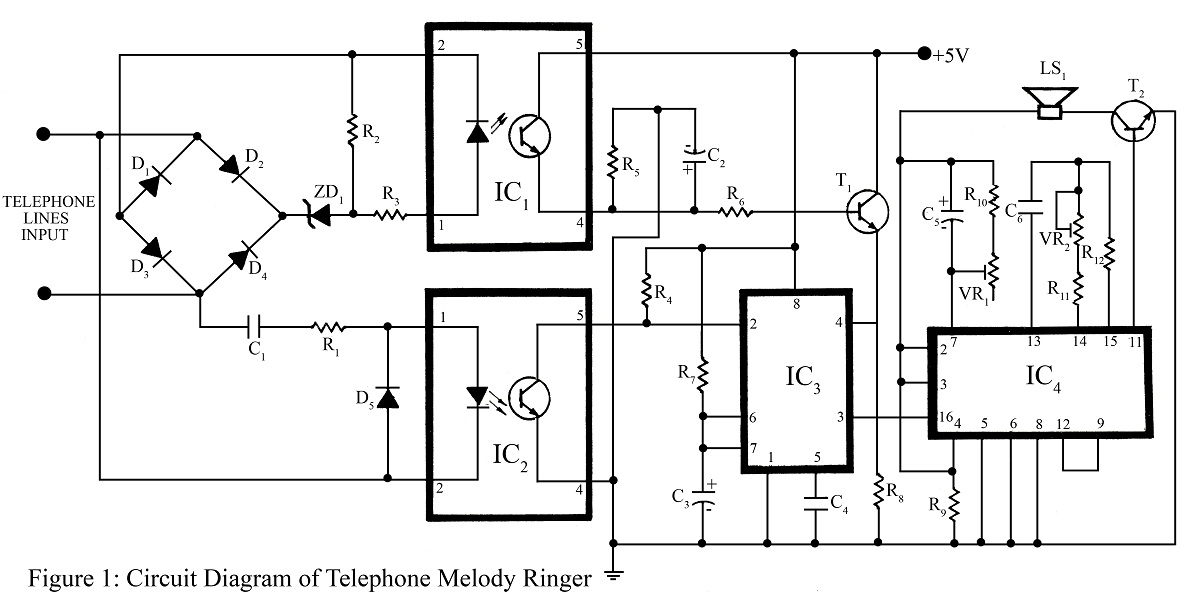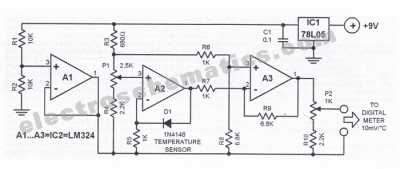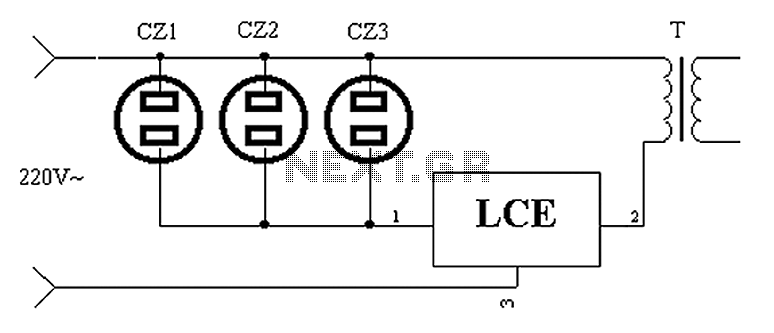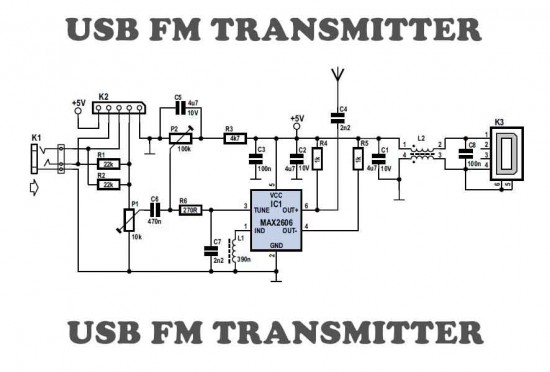
Precision Lf Oscillator Circuit
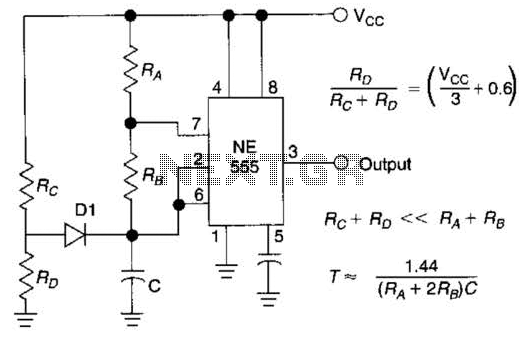
Using Rl, R7, and D1 to preset CI to one third of the supply voltage. This circuit avoids a longer first cycle period than subsequent cycles.
The circuit described involves the use of resistors Rl and R7 along with diode D1 to establish a reference voltage at one third of the total supply voltage across capacitor CI. This configuration is particularly useful in timing applications where a consistent and reliable cycle period is essential. By utilizing the voltage divider principle, the combination of Rl and R7 ensures that CI is charged to the desired voltage level quickly and efficiently.
The inclusion of diode D1 serves to prevent reverse current flow, which could disrupt the charging process of CI and lead to inaccuracies in the timing sequence. The circuit is designed to minimize the duration of the initial cycle period, which is often longer due to the charging characteristics of capacitors. By pre-setting the voltage on CI, the circuit effectively normalizes the timing for subsequent cycles, allowing for more predictable and stable operation.
In applications such as oscillators or timers, maintaining a consistent cycle duration is critical. The use of this configuration not only simplifies the initial setup of the circuit but also enhances overall performance by ensuring that the initial cycle does not exceed the length of subsequent cycles. This design choice is essential for applications requiring precision timing and consistent performance over extended periods. Using Rl, R7, and D1 to preset CI to one third of the supply voltage, this circuit avoids a longer first cycle period than subsequent cycles.
The circuit described involves the use of resistors Rl and R7 along with diode D1 to establish a reference voltage at one third of the total supply voltage across capacitor CI. This configuration is particularly useful in timing applications where a consistent and reliable cycle period is essential. By utilizing the voltage divider principle, the combination of Rl and R7 ensures that CI is charged to the desired voltage level quickly and efficiently.
The inclusion of diode D1 serves to prevent reverse current flow, which could disrupt the charging process of CI and lead to inaccuracies in the timing sequence. The circuit is designed to minimize the duration of the initial cycle period, which is often longer due to the charging characteristics of capacitors. By pre-setting the voltage on CI, the circuit effectively normalizes the timing for subsequent cycles, allowing for more predictable and stable operation.
In applications such as oscillators or timers, maintaining a consistent cycle duration is critical. The use of this configuration not only simplifies the initial setup of the circuit but also enhances overall performance by ensuring that the initial cycle does not exceed the length of subsequent cycles. This design choice is essential for applications requiring precision timing and consistent performance over extended periods. Using Rl, R7, and D1 to preset CI to one third of the supply voltage, this circuit avoids a longer first cycle period than subsequent cycles.
